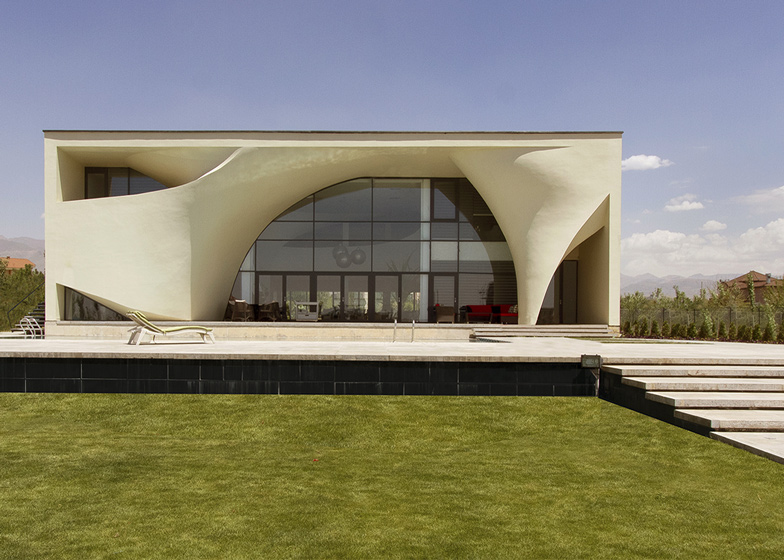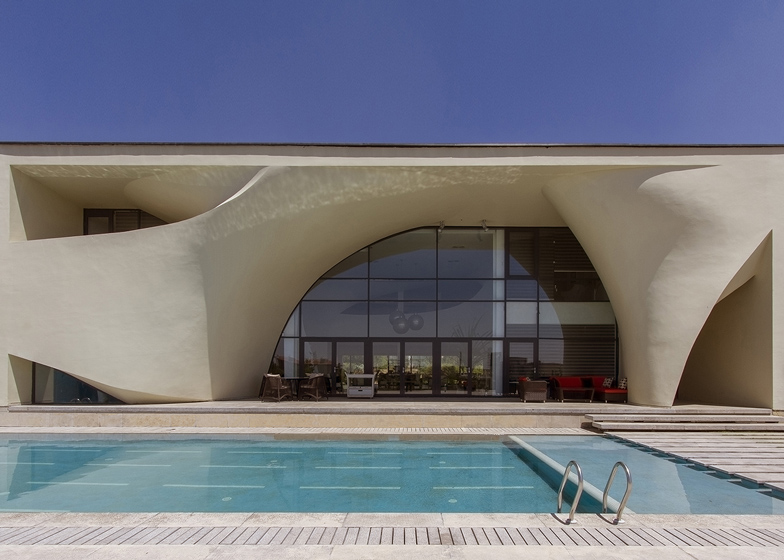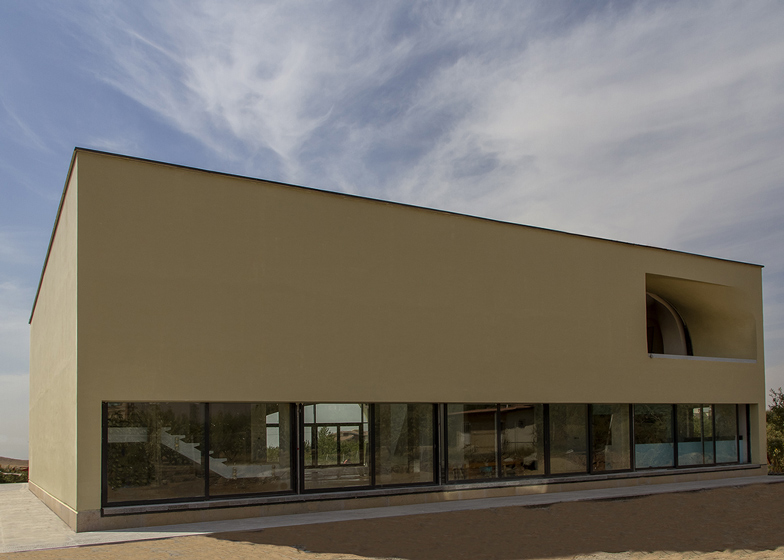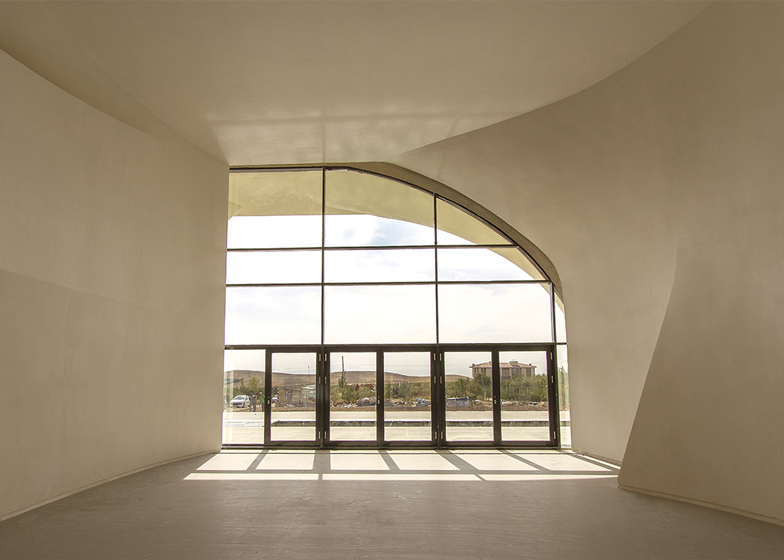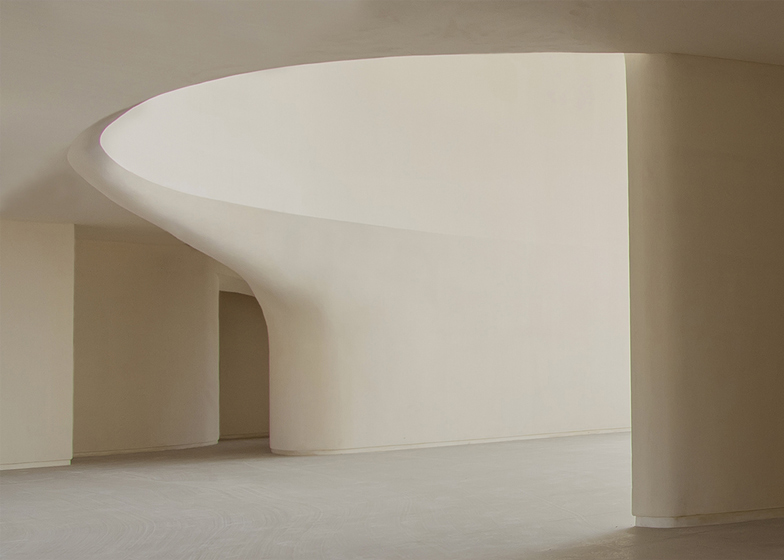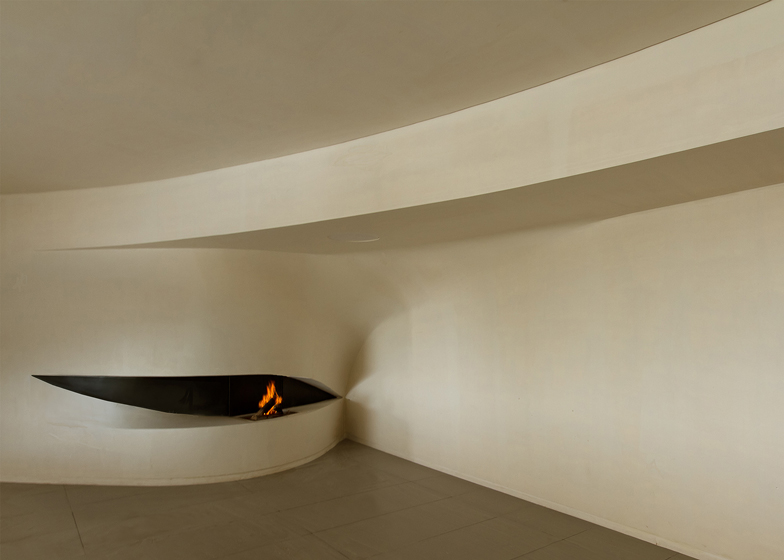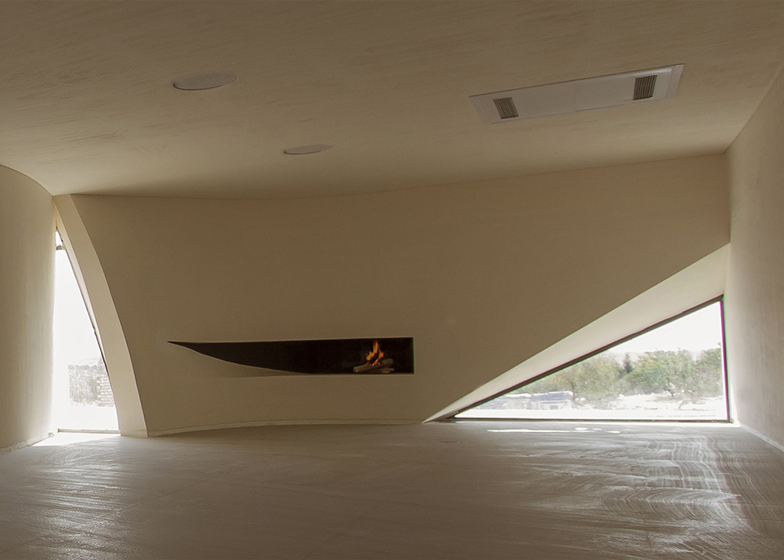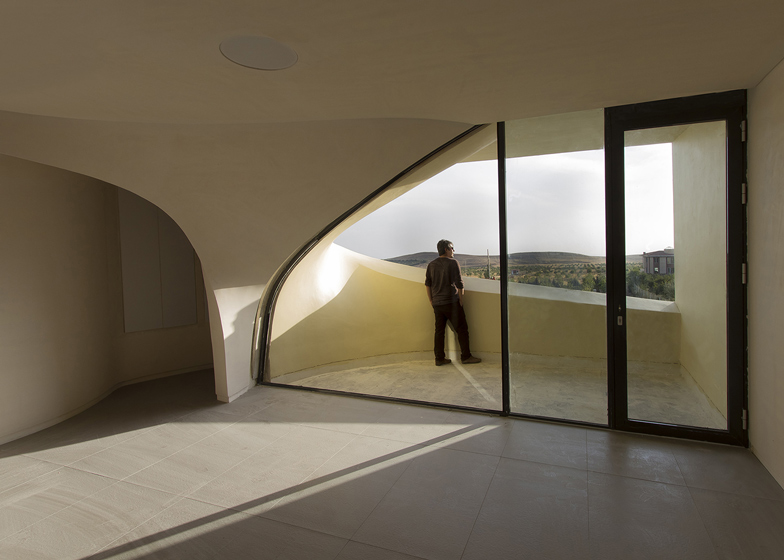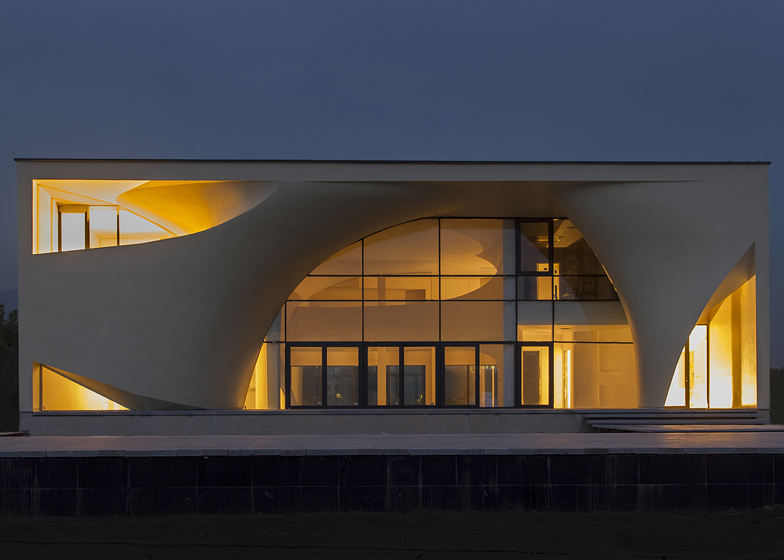Billowing curves sweep across the concrete facade and continue inside this house near Tehran, designed by Iranian studio Next Office (+ slideshow).
Kouhsar Villa in Kordan, Iran, was already partly built when the owner approached Next Office to redesign it. His brief was to open the house up by removing an octagonal void in the centre, which offered little connection with the surrounding landscape.
"Because of its shape and size, this void could not give him the wide, bright interior he desired," said Alireza Taghaboni of Next Office.
Rather than tear the central void's steel columns down, the redesign has covered them with a continuous curved wall, which extends outside to cover the southern facade.
"We realised the only way to revive the project was to take this problem as an opportunity, rather than an obstacle," said Taghaboni. "The south-facing facade wall has been stretched in an elastic manner towards the interior void, where it covers the columns and makes a smooth connection between inside and outside."
The architects cut openings into this curved structure to connect the central void to the surrounding rooms, and also cut through the floors above to create double-height spaces.
"The facade's surface satisfies the requirements of the plan and inserts a sense of dynamism and fluidity throughout the house," said Taghaboni.
To build the curved walls, the architects sprayed concrete on to a supporting structure made from layers of polystyrene sheets and mesh around a CNC-milled wooden frame. To avoid any potential cracks, they also covered the facade in a layer of plastic mesh and exterior paint.
The living room is in the centre of the ground floor, enclosed by the curved walls, and the kitchen, dining area, fireplace and TV room sit in an open-plan layout around this space. A guest bedroom and bathroom are also on the ground floor.
Upstairs, there are three bedrooms and bathrooms arranged around the central void, plus another fireplace, TV room and kitchen.
Outside, the house is surrounded by a pool, a lawn, and wide paved areas, which act like a plinth for the house.
"The house rests in a wide landscape, capturing delightful views of the Alborz mountains in the background," said Taghaboni. "The design strategy has followed a path by which the initial skeleton has been transformed to encompass pure cubic volume, which makes it distinctive in its neighbourhood."
Photography is by Parham Taghiof and Mandana Mansouri.
Here is some text from Alireza Taghaboni and Next Office:
Kouhsar Villa, Kordan, Iran
Our initial intention for the project was in fact to problematise the connection among form, space, and structure. The project came to our studio after a year of being on hold due to the client's dissatisfaction.
The skeleton and barrier walls of the structure were thoroughly constructed. There was a central, octagonal void surrounded by columns, which was exactly what had made the client unhappy – because of its shape and size, this void could not give him the wide, bright interior he desired.
We realised the only way to revive the project was to take this problem as an opportunity, rather than an obstacle. Accordingly, expanding the central void and discarding the southern part of the balcony provided a wider view of the landscape. Next, we enhanced the structure and attached the south cantilever to the existing balcony. Doing this, and removing the lateral slabs and gazebo roof structure, transformed the overall volume to a cubic form.
Next, the south-facing façade wall has been stretched in an elastic manner towards the interior void, where it covers the columns and makes a smooth connection between inside and outside. This allowed the southern wall to perform a fundamental role as a flexible element that not only responded to structural necessities, but also attempted to engage with the aesthetics, functionality, and spatial organisation of the both interior and exterior.
The facade's surface satisfies the requirements of the plan and inserts a sense of dynamism and fluidity throughout the house. This organisational strategy would propose a body in which a strong vacuum action applied to the facade could convey the light, air flow, and vistas inwards to demonstrate the innovative qualities of this highly distinctive work.
The house rests in a wide landscape, capturing delightful views of the Alborz mountains in the background. Considering structural constraints, the design strategy has followed a path by which the initial skeleton has been transformed to encompass pure cubic volume, which makes it distinctive in its neighbourhood. The outcome was a cube, hosting an elastic facade that resulted from a dynamic vacuum tension on the southern face. Stretching the facade towards the void and columns did not merely meet the structural necessities, but also provided spatial qualities for both the interior and exterior.
The building was named Kouhsar ("mountain" in Persian) to recall the old name for the location of the house.
A roof with a span of 20 metres had to be covered. Initially, structural methodology attempted to apply the facade surface as a barrier wall connected to the load-bearing system.
The overall structure was calculated and modelled with structural software. Next, for the manufacturing process, vertical trusses were designed to fit the architectural form. Later, vertical and horizontal CNC-milled surfaces were located on the trusses (each 50 cm). Between each, two surfaces were filled with polystyrene sheets.
Based on a structural study, a net of armatures was placed on the CNC-milled sheets, then a thin metal mesh of 5cm x 5cm was attached to the net. Shot Crete concrete was then shot on to the resultant assembly.
To avoid any probable cracks, a plastic mesh covered the whole facade skin. Finally, finishing jobs were performed to smooth the final surface before it was painted by Jotun Colour.
Design: NextOffice, Alireza Taghaboni
Construction: Ejraye Khas Office
Site area: 5,000 sqm
Total Built Area: 1,118 sqm

